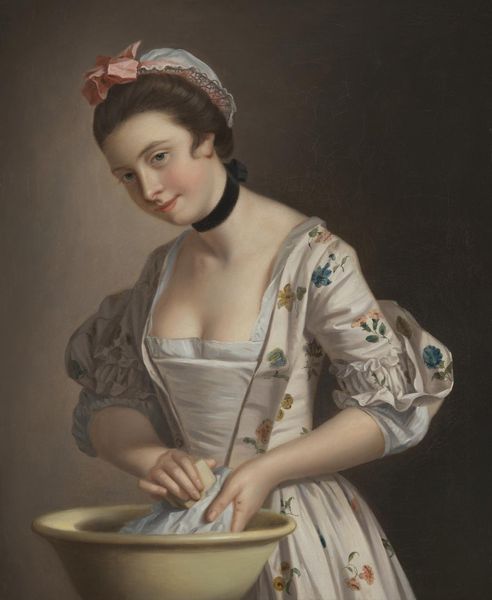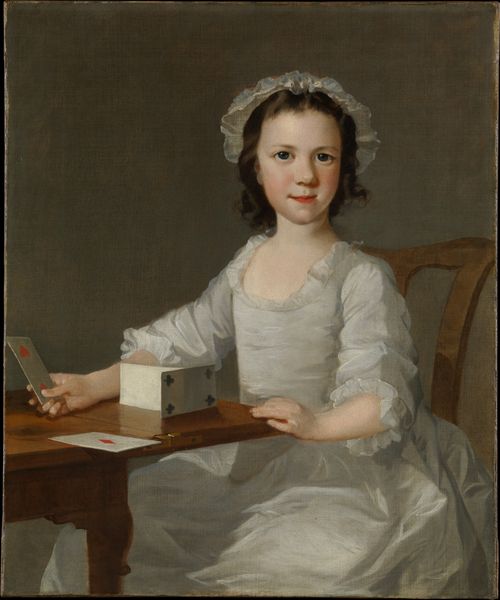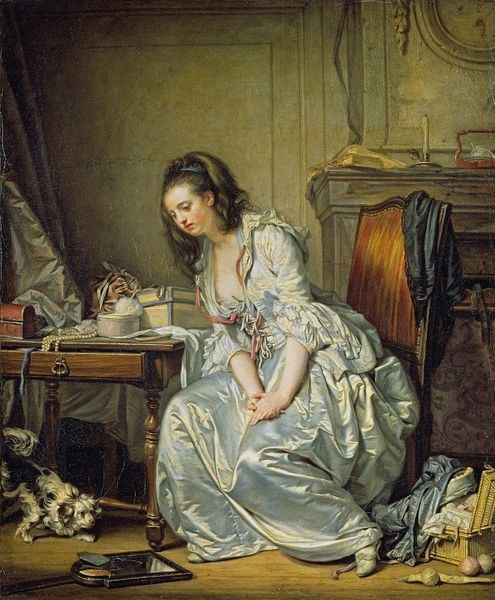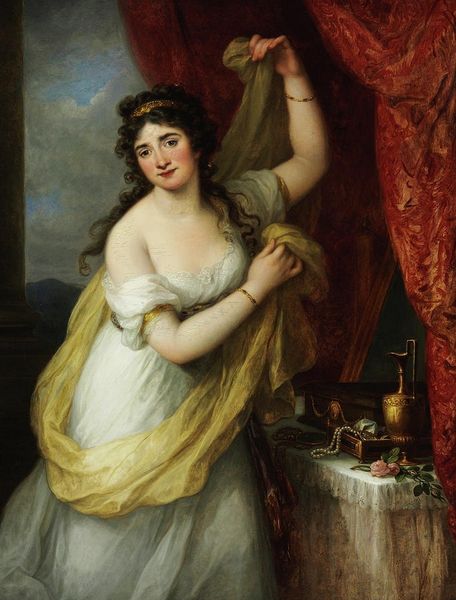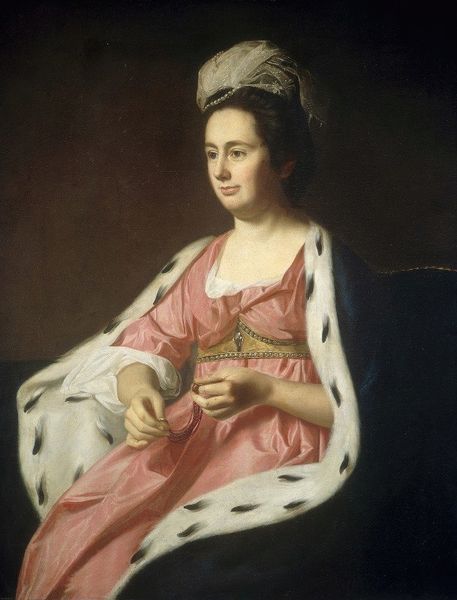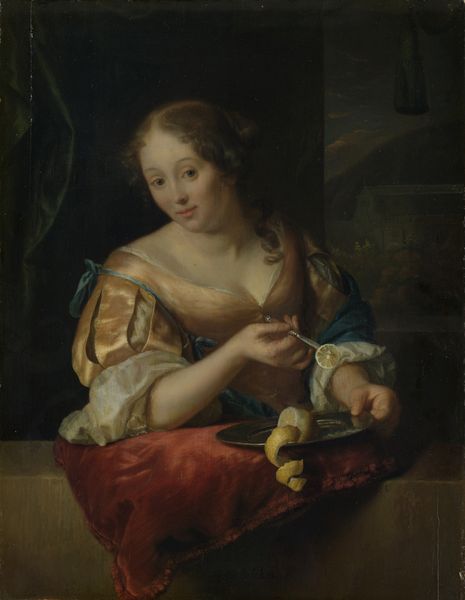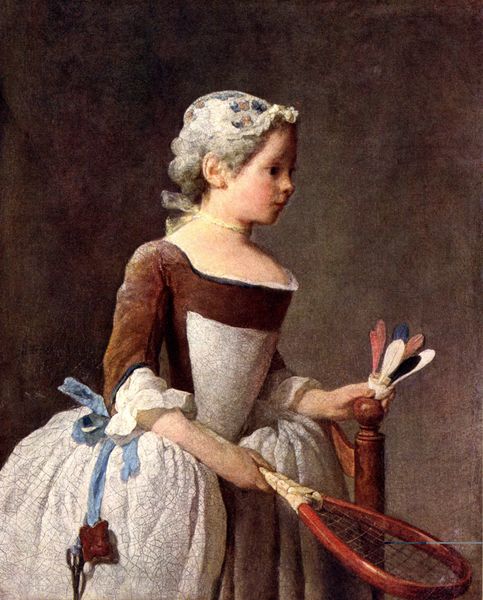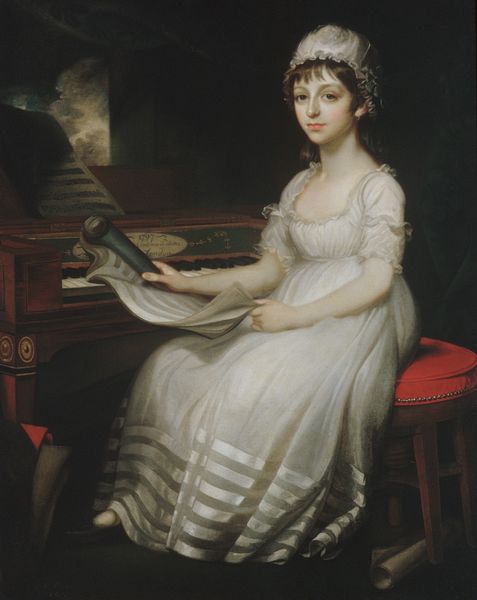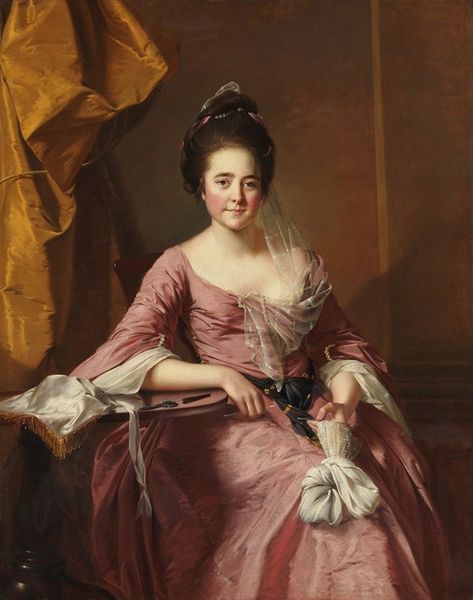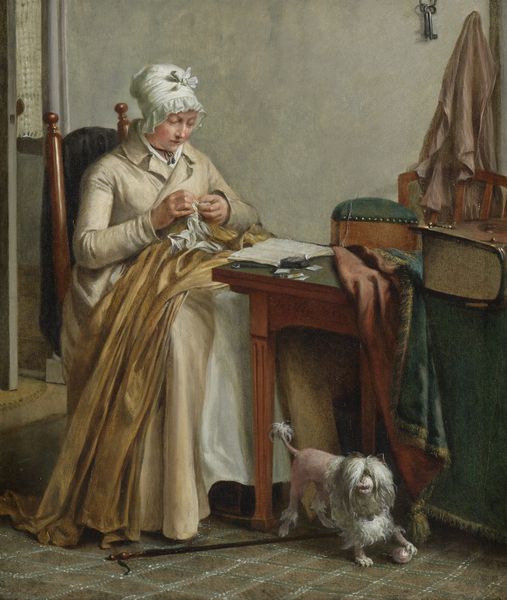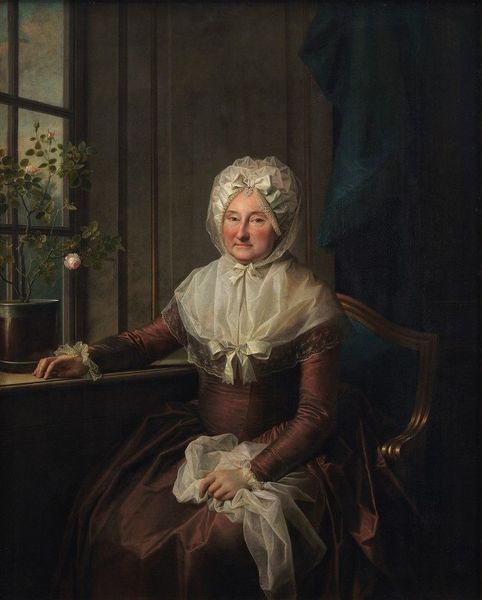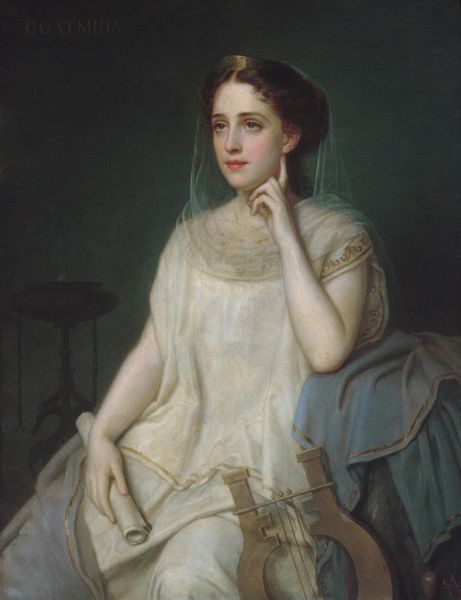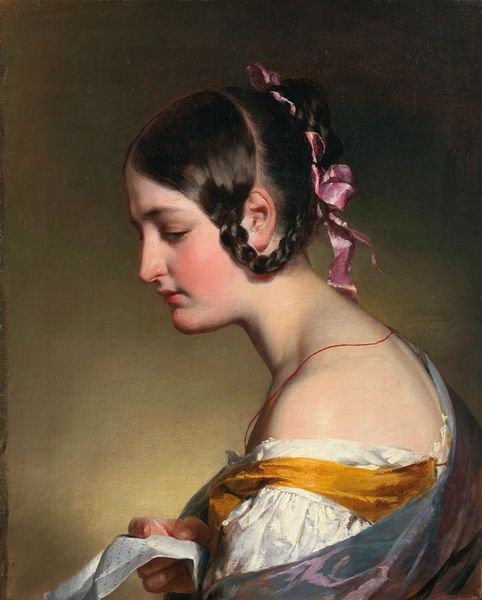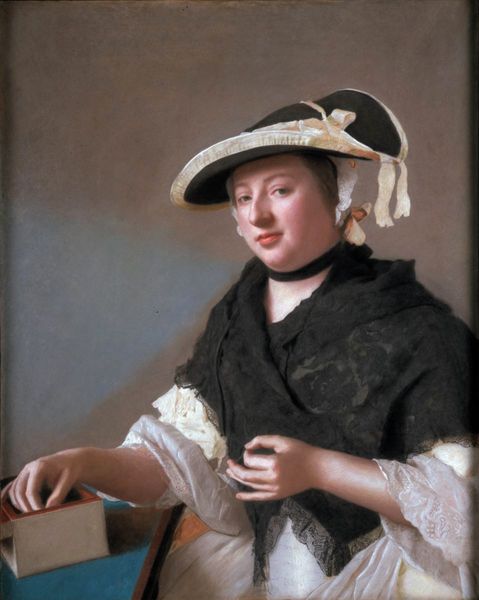
Dimensions: support: 743 x 616 mm frame: 942 x 817 x 92 mm
Copyright: CC-BY-NC-ND 4.0 DEED, Photo: Tate
Curator: Looking at Henry Robert Morland’s "A Laundry Maid Ironing," currently held at Tate Britain, what strikes you? Editor: The quiet domesticity. The composition is so focused; she almost seems lost in thought as she works, a timeless representation of labor. Curator: Indeed, Morland presents this everyday scene with a gentle, almost idealized, light. Notice how he elevates this domestic chore; the act of ironing transcends mere labor. Editor: I agree. Ironing here is symbolic, linked to purity, order, and societal expectations imposed on women, while also suggesting underlying class structures. Curator: Precisely, and the iron itself. It's not just a tool. It signifies the constraints and expectations placed upon women within the era. It shapes their lives as much as it smooths the linen. Editor: It's fascinating how a simple image can convey such loaded cultural meanings, isn’t it? Curator: Absolutely, a picture truly is worth a thousand words.
Comments
tatebritain 6 months ago
⋮
http://www.tate.org.uk/art/artworks/morland-a-laundry-maid-ironing-n01403
Join the conversation
Join millions of artists and users on Artera today and experience the ultimate creative platform.
tatebritain 6 months ago
⋮
This painting of a maid ironing is typical for Morland, who specialised in such ‘fancy pictures’ - subjects drawn from everyday life but with imaginative elements. He repeatedly painted and exhibited idealised pictures of young women in working-class roles, as ballad singers, oyster sellers and laundry maids. Here, the woman is shown passively gazing down, serene as she works, her tools and appearance pristine. There is little indication of her individuality, or of the real hardship of such domestic labour. Instead, she represents a contrived ‘type’, made attractive for contemporary middle and upper-class viewers and saleable for the print market. Gallery label, June 2022
